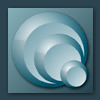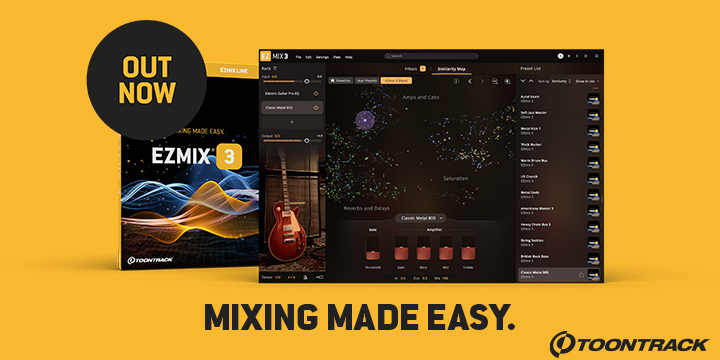
QuikQuak has released the Windows VST version of its new synthesizer plug-in, Glass Viper. It is available for the introductory price of £35. A Mac OS X VST/AU version will be released soon.
Glass Viper is a synthesizer with unique waveform shaping, that has a deep and natural sense of movement. Going beyond analogue simulation, into a truly organic sound, from simple old synths to grungy filthy basses, or delicate pianos to strange unnatural film effects. Instead of taking a sample or oscillator and applying just filters and FX techniques, Glass Viper bends the actual shape of its waveforms through a series of moving control points. Up to four of these swirling and changing sounds can be layered together to create a huge range of instruments.
From the start, Glass Viper's goal was to make sound creation visual, and distance itself from mathematics. Making something with a unique sound was also a priority, and in a world full of synthesizers, this had to mean a fundamental difference. Without the complexity of many changeable modules, Glass Viper encourages play and experimentation. Most of the presets available were born from experimentation, rather than setting out to make a particular sound.
Glass Viper's moving waveform is the fundamental to its sound. When a note is held, the sound can move in a natural and pleasing way, without repetition. Like RaySpace, the visual aspect is also a major part of Glass Viper, guiding the user to a more experimental and less mathematical route to sound creation. The main display will change depending on which panel you are selecting. On the Voice panel the four waveforms of the currently playing note are directly displayed. On the Global panel the actual whole output waveform is plotted. And on the Waveshaper panel, you can edit the waveforms in real-time so you can really get the feel of the sound creation process. There is an extensive copy and paste algorithm, which enables you to copy either each panel, voice or whole (4 voices) instruments - this speeds up the sound creation process enormously, and also allows the user to use parts of different presets to make new ones.
Features:
- 4 voices per instrument.
- Unique waveform mouse editing - listen while you tweak.
- 4 LFOs for voice basics, moving any waveform control point.
- Line, cosine or cubic interpolation for waveforms.
- 3 LFO per voice with 2 envelopes controlling speed and gain independently.
- 4 syncable delay lines per voice.
- Six filter types.
- Comprehensive Copy & Paste algorithms for easy Panel, Voice, and Instrument copying.
- Plate reverb effects modelled from RaySpace technology.
- Stereo chorus.
- Additional wave-shaper.
- 6 controllers.
- Comes with 128 presets (included in evaluation copy).









